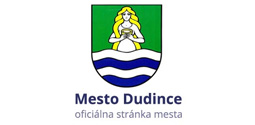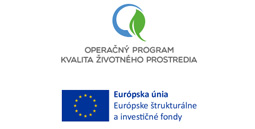Trips
The stay in the Spa is an ideal opportunity to explore the beauty of the regions of Hont and Tekov. The intact nature of the Dudince surroundings, historic jewels or world rarities, such as the rock dwellings, fascinate Slovak and foreign visitors every year. The clients can select from the rich offer of half-day and whole-day trips – besides the classic wandering through distinctive villages or picturesque small towns, excursions in vine cellars connected with tasting of vine typical for the region are much enjoyed.
BANSKÁ ŠTIAVNICA (41 km)
This historical jewel of over-national importance was registered in the UNESCO List of cultural and natural heritage on the 400th place at the end of 1993. Its irreplaceable position in the history, as well as its present-day cultural and social life full of untraditional and breathtaking events attracts many Slovak and foreign visitors to the town. What’s so interesting in Štiavnica? It is probably the fact, that it has got something for everybody. It can pleasantly exhaust every fan of historic exhibitions, whom it offers a really rich programme, but it is very hospitable to other visitors, too – whether the sport or art enthusiasts. The town itself, as well as the natural and technical landmarks in its surrounding, offers many possibilities of spending the spare time both, in the winter and in the summer. The dominant features of Štiavnica are, for example: the old and the new castle, Klopačka, the church of St. Catherine, the town hall, the Holy Trinity square, and the Calvary situated in distinctive landscape. The small and quaint town saturated with historical atmosphere has many things to offer to its visitors, even if they return several times.
SV. ANTON (35 km)
The visitors of Banská Štiavnica rarely miss a visit of the unique baroque–classicistic manor house of St. Anton, known as Antol in the past. The village of St. Anton lies 4 km south from Banská Štiavnica and it conceals a real jewel. The popular Koháry family has built it as one of their seats under the legendary hill of Sitno; later the manor house belonged to the family of Coburg. The visitors can admire beautiful fauna in the part dedicated to game keeping, and especially the precious exhibits in the historical part of exhibition.
Some of the most precious exhibits are: ebony table inlaid with ivory and pearls made by master Johann Mann of Augsburg; furnishing of so-called Golden Salon, the original owner of which was Maria Antoinette, the daughter of the empress Maria Theresa; the bed of the successor of the Austrian – Ugrian throne, the crown prince Rudolf; the unique collection of satiric caricatures from French magazines and many trophies decorating the long halls of the mansion.
KRUPINA (30 km)
The district town Krupina, one of the oldest towns in Slovakia, lies on the border of Krupinská plain and Štiavnické mountains, in the valley of Krupinica river, 269 m above the sea level. Its history goes back to the 12th century. The town played an important role in the times of anti-Turkish fights, what is reminded by the town dominant feature, the anti-Turkish watch-tower – Vartovka. The town inhabitants underwent several fires, plague epidemics and natural disasters in the past. Vartovka, the town walls, cellars and burgher’s houses are the witnesses of Krupina´s rich history. Other places worth seeing are the Catholic church and the Evangelic church in the town centre.
BZOVÍK (26 km)
The fortress Bzovík, originally a Cistercian cloister, was built in the 12th century. The construction was originally built in the Romanesque style, however, it was reconstructed many times during the following periods – for example in the 16th century, when Žigmund Balassa captured the cloister. He drove monks out and reconstructed the residential premises. Robust square fortification with corner bastions was built around the whole complex and the cloister became an important strong point against invasions of the Turks. Since the middle of the 17th century, the building was administered by the Jesuits. The cloister was significantly influenced by the reform of Jozef II, known for his not very friendly relation with the church and its activities. In the 20th century, the fortress Bzovík became owned by a private person and it gradually decayed. The Second World War marked the building as well. Nowadays, the former cloister attracts visitors, especially fans of the unrepeatable atmosphere of medieval castles and ruins, as well as tourists and hikers, who have make it a popular place for wanderings in the nature in the very surrounding of Krupina.
SEBECHLEBY (19 km)
Distinctive village of Sebechleby is situated at the root of the Štiavnické vrchy mountains. The first mention about the village goes back to the year 1135. This typical vineyard village that includes the hamlets of Stará and Mladá Hora enjoys a huge interest from the side of tourists who can visit the museum exposition and taste the traditional specialties at the same time, especially the good vine, which the natives are deservedly so much proud of.
HRUŠOV (30 km)
Hrušov is situated on the south of Krupinská planina plain in the district of Veľký Krtíš. In the village there are typical country estates as well as tuff-sand cellars that are still used to store vine. There is an interesting 16 km long educational trial with folk houses, blacksmith’s forge, resting places and various local attractions. The popular event Hontianska parade is organized every year in August in Hrušov.
HUNGARY
Visitors of Dudince can choose from trips offered by local travel agencies and discover beautiful locations in nearby Hungary as well (Budapest – 100 km, Esztergom – 65 km, Sisi Castle in Gödöllő – 90 km).











 Dudince sa nachádzajú v nadmorskej výške 140 m n.m., na upätí Krupinskej kotliny v okrese Krupina v trojuholníku Bratislava, Banská Bystrica, Budapešť v čistom životnom prostredí bez exhalátov priemyslu...
Dudince sa nachádzajú v nadmorskej výške 140 m n.m., na upätí Krupinskej kotliny v okrese Krupina v trojuholníku Bratislava, Banská Bystrica, Budapešť v čistom životnom prostredí bez exhalátov priemyslu...